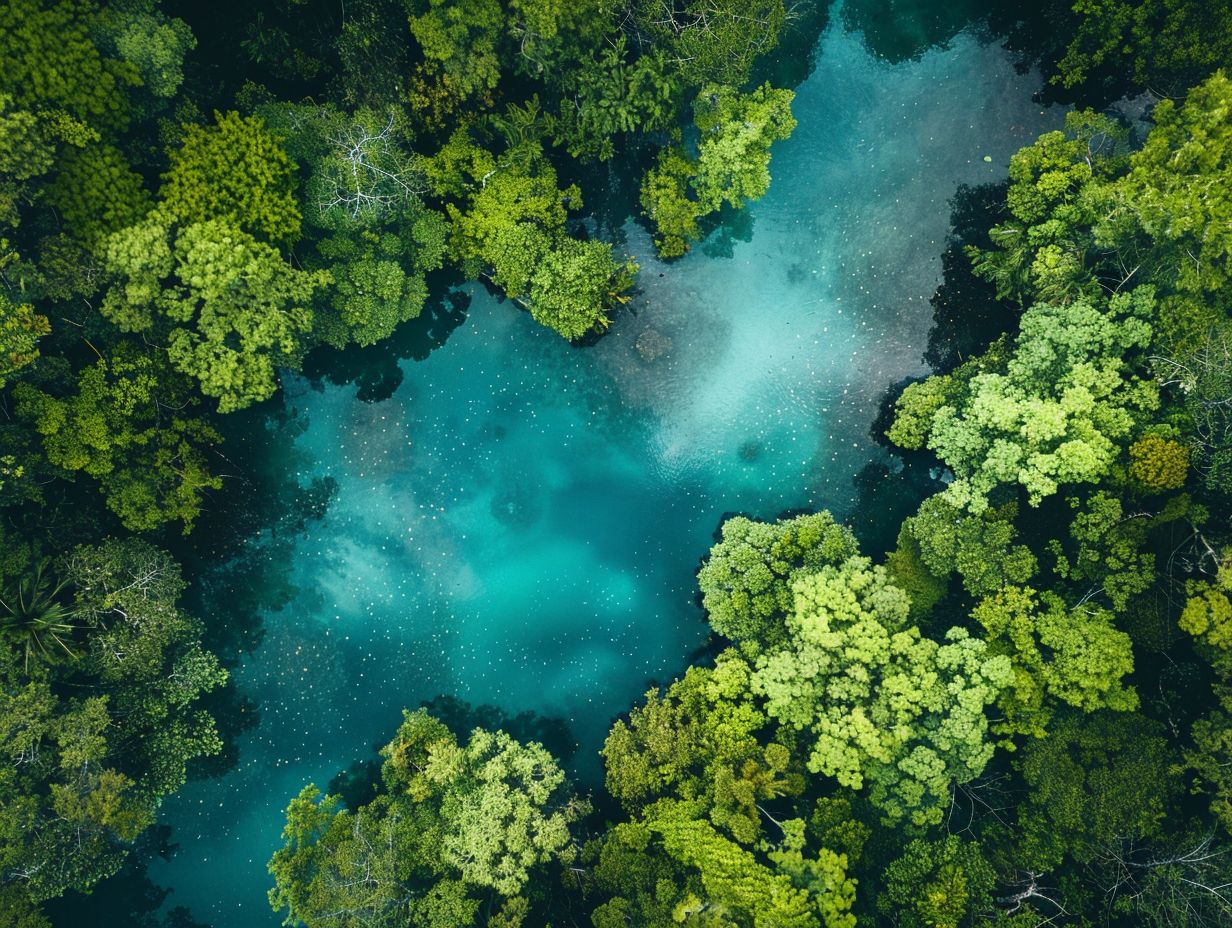Blue Springs State Park, located in Orange City, Florida, is a natural wonder that boasts a rich and diverse array of plant life. Spanning over 2,600 acres, this park is home to a wide variety of native and non-native species, each with its own unique characteristics and ecological significance. In this comprehensive guide, we’ll delve into the fascinating world of Blue Springs State Park’s plants, exploring their diversity, adaptations, and the role they play in the park’s vibrant ecosystem.
Native Plants of Blue Springs State Park
Blue Springs State Park is a haven for a variety of native plant species, many of which are adapted to the park’s unique environmental conditions. These plants play a crucial role in maintaining the delicate balance of the ecosystem, providing food and shelter for the park’s diverse wildlife.
Aquatic Plants
The park’s crystal-clear spring waters are home to a variety of aquatic plants, including:
- Eelgrass (Vallisneria americana): A submerged aquatic plant that provides important habitat and food for fish and other aquatic creatures.
- Water Lily (Nymphaea odorata): A floating-leaved plant with beautiful white flowers that add a touch of elegance to the spring’s surface.
- Bladderwort (Utricularia spp.): A carnivorous plant that traps small aquatic organisms in its specialized bladders, helping to maintain the balance of the aquatic ecosystem.
Terrestrial Plants
The park’s upland areas and hardwood hammocks are home to a diverse array of terrestrial plant species, including:
- Live Oak (Quercus virginiana): A majestic tree with sprawling branches and evergreen leaves that provide shade and habitat for a variety of wildlife.
- Saw Palmetto (Serenoa repens): A low-growing, fan-shaped palm that is an important food source for the park’s gopher tortoises and other wildlife.
- Coontie (Zamia pumila): A cycad-like plant that was an important food source for the region’s indigenous people and is now a protected species in the park.
Invasive Plant Species

While Blue Springs State Park is home to a wealth of native plant life, it also faces the challenge of managing invasive species that can disrupt the delicate balance of the ecosystem. Some of the most problematic invasive plants found in the park include:
- Air Potato (Dioscorea bulbifera): A fast-growing vine that can quickly smother and outcompete native vegetation.
- Caesar’s Weed (Urena lobata): A shrubby plant that can form dense thickets, crowding out native species.
- Japanese Plum (Prunus japonica): An ornamental tree that has escaped cultivation and can spread rapidly, displacing native plant communities.
Park staff and volunteers work diligently to monitor and control the spread of these invasive species, ensuring the continued health and diversity of the park’s native plant communities.
Threatened and Endangered Plants
Blue Springs State Park is home to several plant species that are considered threatened or endangered, either at the state or federal level. These include:
- Okeechobee Gourd (Cucurbita okeechobeensis): A rare, trailing vine that is listed as endangered by the U.S. Fish and Wildlife Service.
- Florida Spiny-pod (Matelea floridana): A climbing vine that is listed as threatened by the state of Florida.
- Scrub Plum (Prunus geniculata): A small, thorny shrub that is listed as endangered by the state of Florida.
Park staff and conservation organizations work to protect and monitor these rare and imperiled plant species, ensuring their continued survival within the park’s boundaries.
Recreational Opportunities and Interpretive Programs
Blue Springs State Park offers visitors a unique opportunity to explore and appreciate the park’s diverse plant life. The park’s 0.4-mile boardwalk trail provides an up-close look at the park’s aquatic and terrestrial plant communities, while interpretive programs and educational signage help visitors learn about the importance of these plants and the role they play in the park’s ecosystem.
Visitors can also participate in guided plant walks and nature programs led by park staff and volunteers, where they can learn about the park’s native and invasive plant species, as well as the conservation efforts underway to protect the park’s unique flora.
Conclusion
Blue Springs State Park is a true gem of Florida’s natural heritage, boasting a rich and diverse array of plant life that is essential to the park’s vibrant ecosystem. From the aquatic plants that thrive in the park’s crystal-clear springs to the towering live oaks and delicate threatened species, the park’s flora is a testament to the incredible biodiversity of the region. By understanding and appreciating the importance of these plants, visitors can play a vital role in the ongoing conservation and preservation of this remarkable natural wonder.
References:
– BLUE SPRING STATE PARK. (n.d.). Florida State Parks. Retrieved May 25, 2024, from https://www.floridastateparks.org/sites/default/files/media/file/Blue%20Spring%2009-18.pdf
– Why You Need Blue Springs, Orange City In Your Life. (2023, October 31). Savvy Single Mama Travels. Retrieved May 25, 2024, from https://www.savvysinglemamatravels.com/post/why-you-need-blue-springs-orange-county-in-your-life
– Blue Spring State Park. (n.d.). Florida State Parks. Retrieved May 25, 2024, from https://www.floridastateparks.org/parks-and-trails/blue-spring-state-park
– RUTH B. KIRBY GILCHRIST BLUE SPRINGS STATE PARK. (n.d.). Florida Department of Environmental Protection. Retrieved May 25, 2024, from https://floridadep.gov/sites/default/files/Gilchrist%20Blue%20Chapter%20AG%20Draft.pdf
– Invasive Species – Blue Spring. (n.d.). Blue Spring Group. Retrieved May 25, 2024, from http://bluespringgroup.blogspot.com/p/resource-management.html

